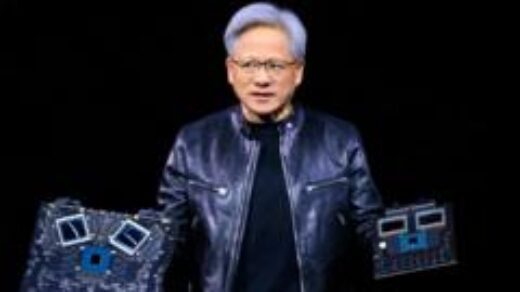Apple has announced that its highly anticipated Vision Pro headset will be available for purchase in the United States on 2 February. US customers have the option to pre-order the mixed-reality device for $3,499 (£2,749) starting in mid-January. However, there is no set date for a UK launch. This is Apple’s first major new product since the release of the Apple Watch in 2015. The company unveiled the headset in June 2023 after years of speculation during development. However, there have been setbacks since then. According to the Financial Times, Apple has significantly reduced its production forecasts, from an estimated one million units to 400,000 in 2024. In addition to the release date, Apple announced that the device will have 256GB of storage and clarified that the eye-tracking technology can function with just one dominant eye for individuals who do not have full use of both eyes.
Interestingly, Apple is attempting to differentiate its headset from other devices on the market by instructing developers to brand their apps as “spatial computing” instead of using terms like augmented reality (AR), virtual reality (VR), extended reality (XR), or mixed reality (MR). In a blog post targeting developers, Apple stated, “Don’t describe your app experience as augmented reality (AR), virtual reality (VR), extended reality (XR), or mixed reality (MR).” Apple has also released a trailer online featuring characters from films wearing goggles and helmets, reminiscent of the hype surrounding the launch of the iPhone in 2007.
If successful, the Vision Pro could become a new multi-billion dollar revenue stream for Apple. However, the high price tag is likely to limit its accessibility to affluent individuals, especially as many people around the world struggle to afford basic necessities.
The BBC had the opportunity to test out the Vision Pro in June last year and found the mixed-reality experience to be a mixed bag. The BBC was one of the few news organizations allowed to try out the device, but no photos or filming were permitted. Unlike many existing headsets, Apple has detached the battery, making it less heavy on the head. However, this means that the battery has to be placed beside the user and connected with a cable. The user interface is typical of Apple’s minimalist design, with familiar app icons appearing when the headset is activated. Gesture control is used to navigate the device, and the headset tracks the user’s gaze. The level of immersion can be adjusted using a physical dial, allowing users to choose between a full-room experience or a smaller display. Despite these features, the demo experienced some issues, although Apple employees emphasized that it was not a finished product. The ban on filming during the demonstration prevented these issues from being recorded or shared online.









